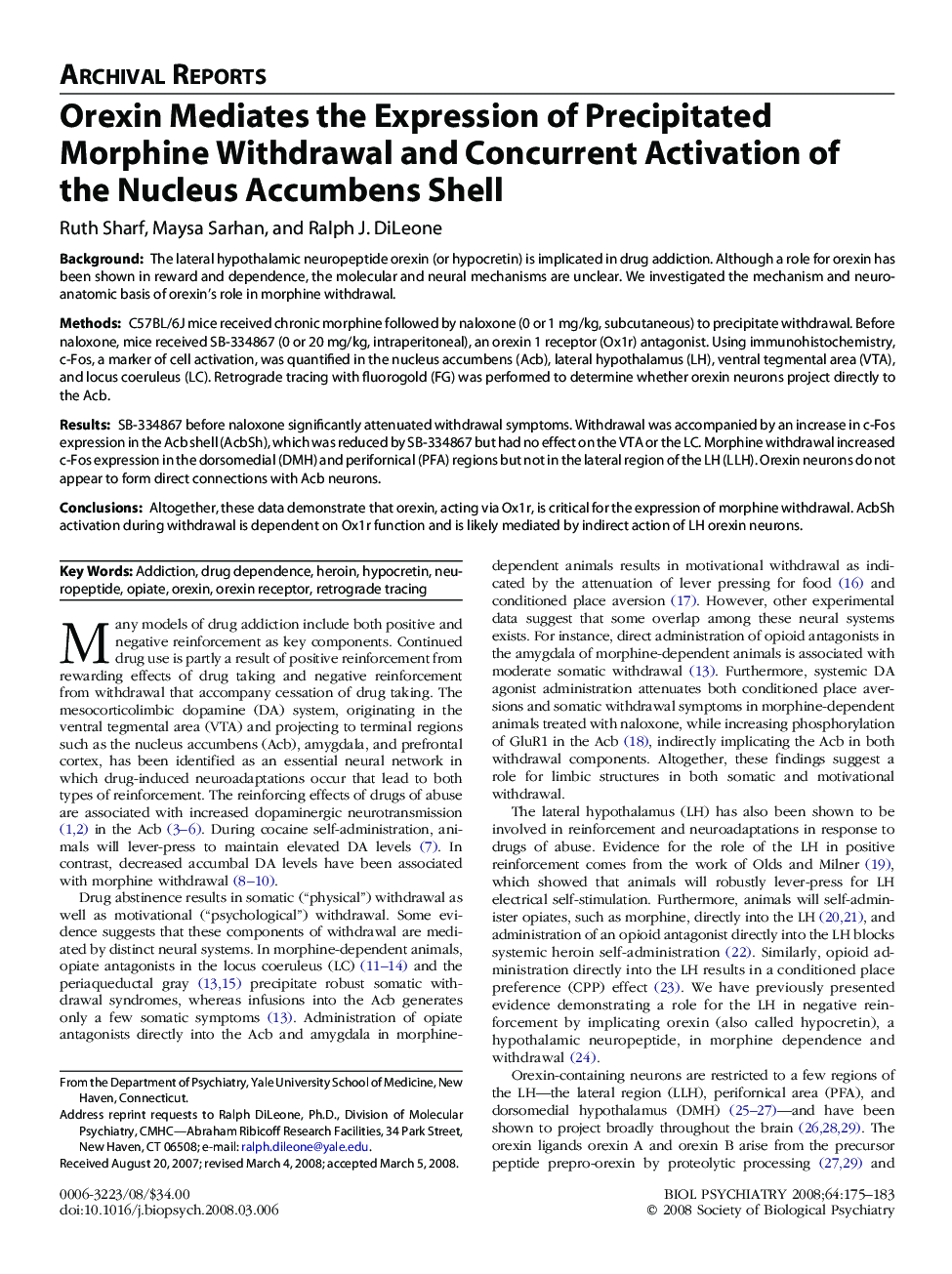| Article ID | Journal | Published Year | Pages | File Type |
|---|---|---|---|---|
| 4180003 | Biological Psychiatry | 2008 | 9 Pages |
BackgroundThe lateral hypothalamic neuropeptide orexin (or hypocretin) is implicated in drug addiction. Although a role for orexin has been shown in reward and dependence, the molecular and neural mechanisms are unclear. We investigated the mechanism and neuroanatomic basis of orexin's role in morphine withdrawal.MethodsC57BL/6J mice received chronic morphine followed by naloxone (0 or 1 mg/kg, subcutaneous) to precipitate withdrawal. Before naloxone, mice received SB-334867 (0 or 20 mg/kg, intraperitoneal), an orexin 1 receptor (Ox1r) antagonist. Using immunohistochemistry, c-Fos, a marker of cell activation, was quantified in the nucleus accumbens (Acb), lateral hypothalamus (LH), ventral tegmental area (VTA), and locus coeruleus (LC). Retrograde tracing with fluorogold (FG) was performed to determine whether orexin neurons project directly to the Acb.ResultsSB-334867 before naloxone significantly attenuated withdrawal symptoms. Withdrawal was accompanied by an increase in c-Fos expression in the Acb shell (AcbSh), which was reduced by SB-334867 but had no effect on the VTA or the LC. Morphine withdrawal increased c-Fos expression in the dorsomedial (DMH) and perifornical (PFA) regions but not in the lateral region of the LH (LLH). Orexin neurons do not appear to form direct connections with Acb neurons.ConclusionsAltogether, these data demonstrate that orexin, acting via Ox1r, is critical for the expression of morphine withdrawal. AcbSh activation during withdrawal is dependent on Ox1r function and is likely mediated by indirect action of LH orexin neurons.
